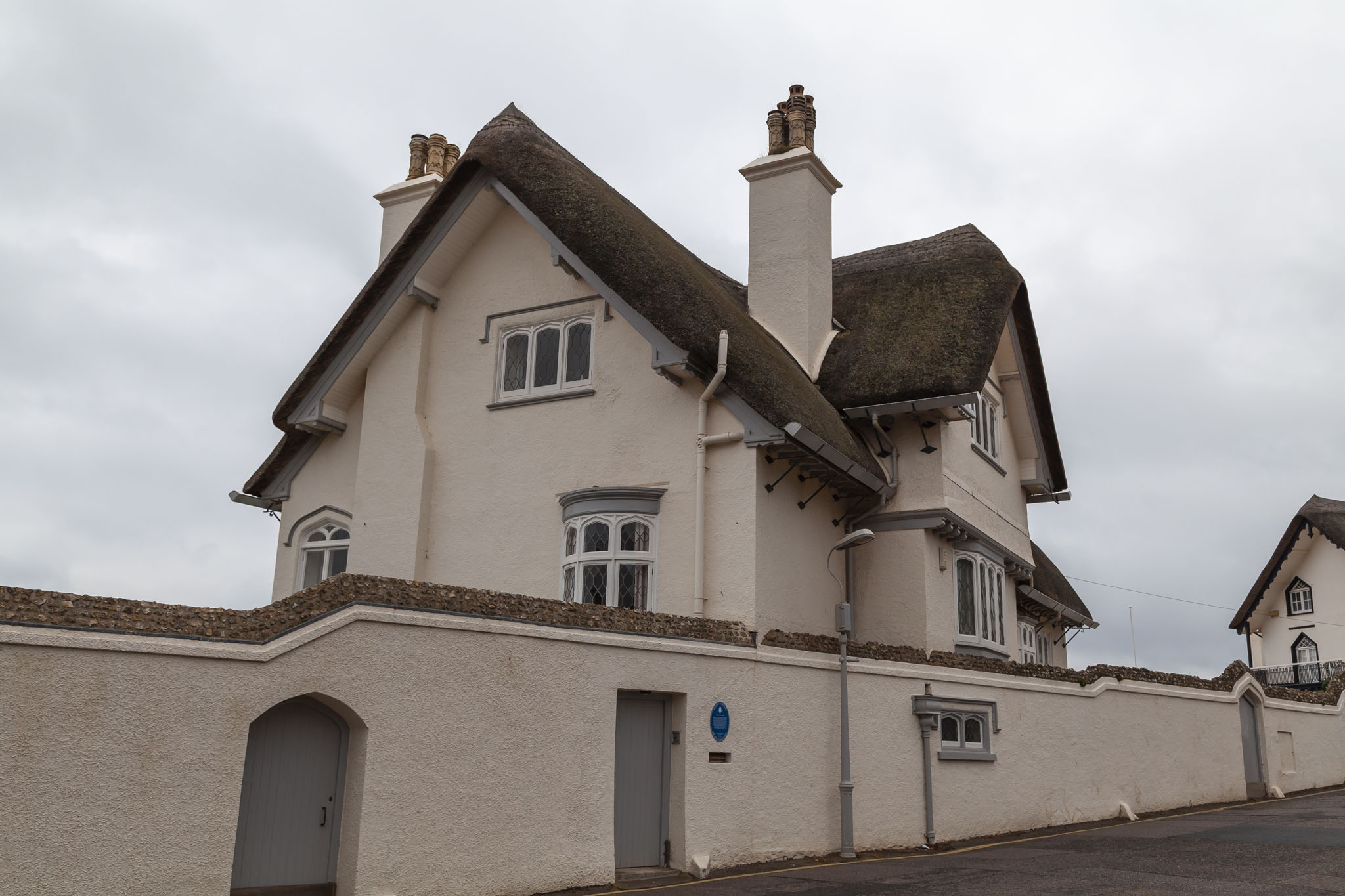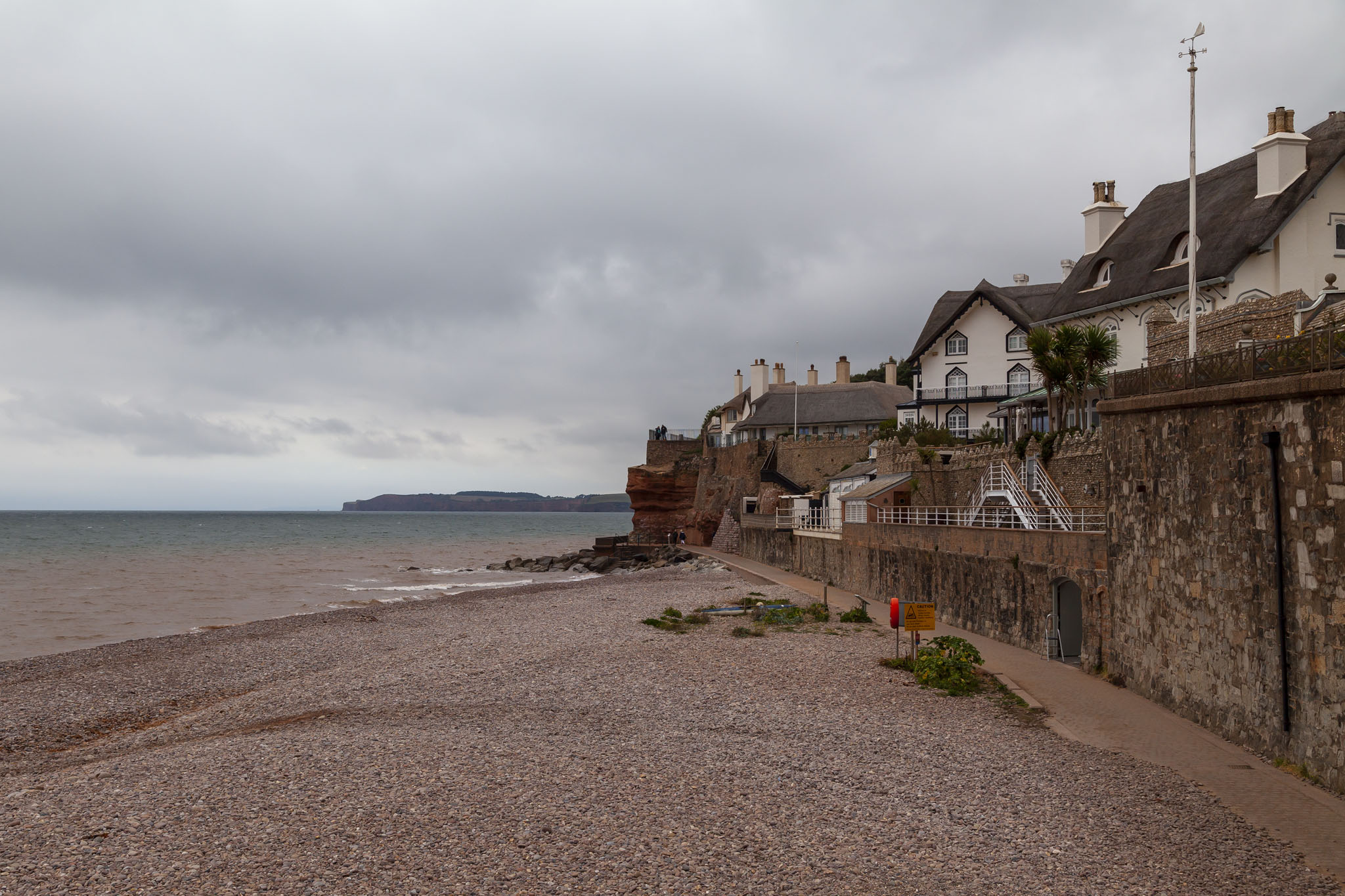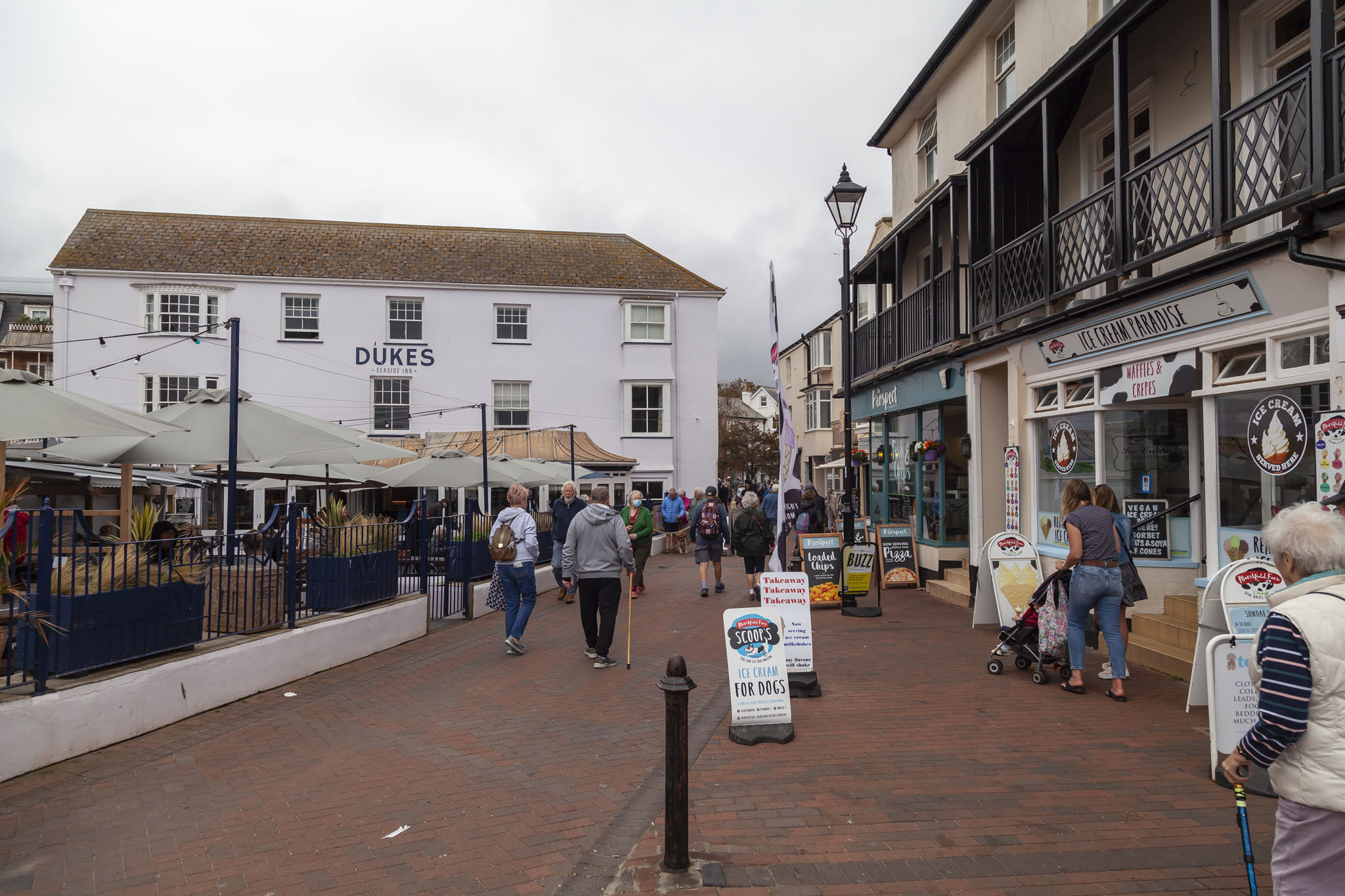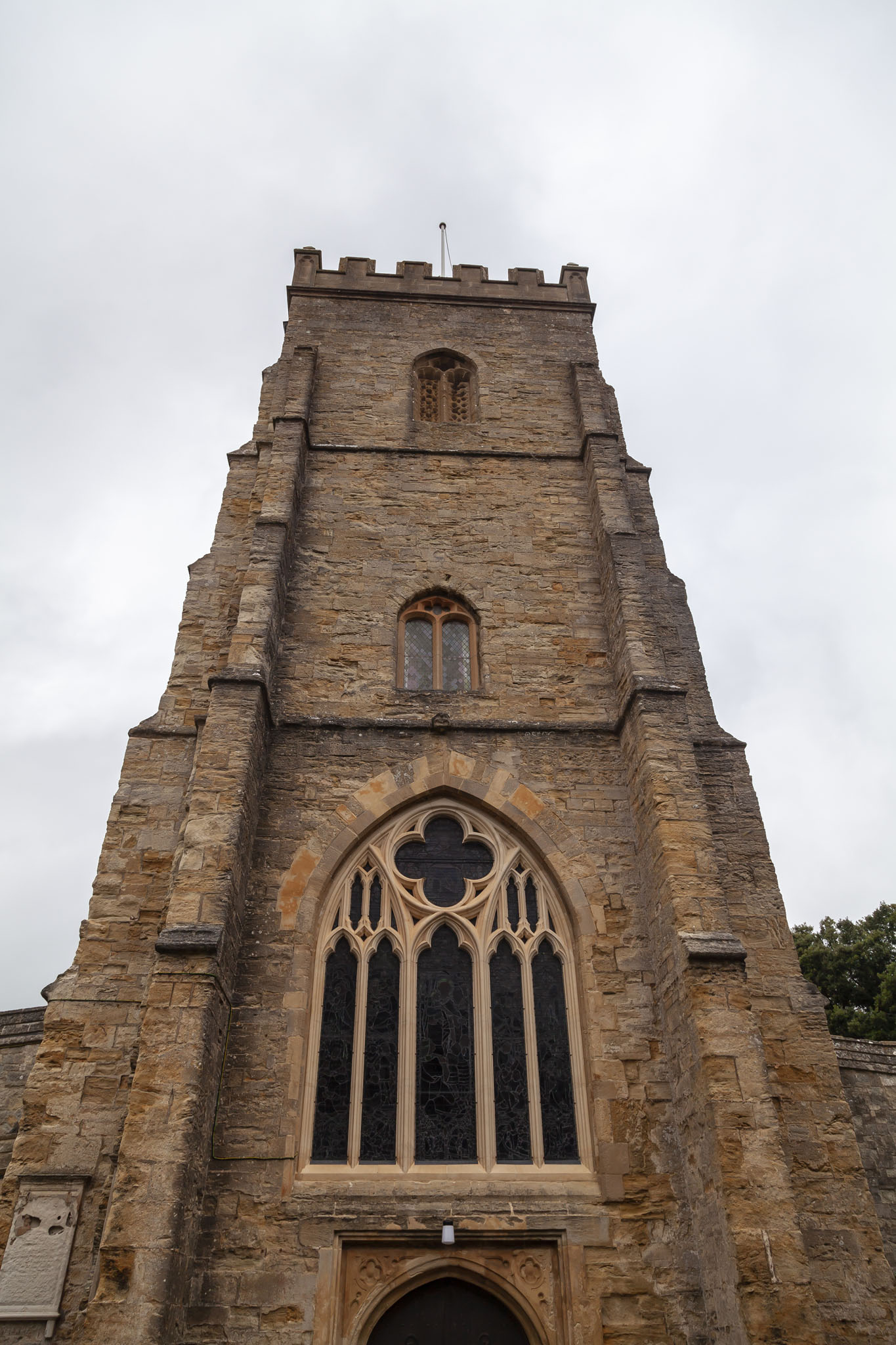Our West Country break was split into two parts, those being three days in Plymouth and three in Weymouth. About half-way between those two locations along the southern coast of England is the town of Sidmouth and that is where we decided to split up the drive between our two holiday destinations because we wouldn’t be able to check into our hotel until the afternoon, it would give us a chance to get out and stretch our legs, and we’d never been to Sidmouth before either.
It was busy in Sidmouth when we arrived. The roads are narrow and pedestrians and other road traffic were plentiful. After two unsuccessful attempts to find car parking nearer the town’s shops we ended up at Manor Road Long Stay Car Park, necessitating a walk down Peak Hill Road towards and along the seafront (with the unwelcome promise of a walk back up the road to return to the car later).
Our walk initially took us past a couple of thatched cottages and it was here that we saw the first of what would turn out to be a lot of blue plaques in Sidmouth. If you have the time you could probably walk around and find them all. One of the cottages was likely the first building to be constructed in this part of the town (officially Clifton) while the other was, for a while, the home of an American member of the Chubb lock-making family. Not the hugest claim to fame but an indication of how proud the locals are of Sidmouth in general, and the plaques themselves are part of an annual community dividend from a Canadian millionaire’s bequeathment.
The Victoria Hotel opposite the cottages was built in the early years of the twentieth century and boasted modern facilities such as en suite bathrooms which attracted visitors along with its views over the water. Over the years it has hosted famous literati such as Sir John Betjeman and George Bernard Shaw, and indeed Sidmouth has many connections with the writing world, featuring in works by Thomas Hardy, Beatrix Potter, and H.G. Wells amongst others. In addition to literature Sidmouth has a royal history with Victoria as a baby spending time in the town with her family in 1819. Much of Sidmouth’s growth from a fishing village came during the surge in popularity of seaside resorts during Georgian and Regency periods.
To the Sidmouth shoreline then since that’s the title of this post. We are – and you’ll know this already if you’re familiar with my writing and pictures – very fond of the sea, and it’s a rare thing for us to travel and not spend time beside it or on it in some fashion. If a town or city has a beach and we’re passing then we’ll almost certainly take a look. As you can tell from the photos below the weather had changed quite a bit from the clear skies of the previous days. The ambient temperature wasn’t too bad but the wind was occasionally fierce, churning up the water and adding even more murkiness to its colour than was being reflected from the cloud cover above.
The prominent red colouration you can see in the cliffs and the beach is an indicator of Sidmouth’s location along what is known as the Jurassic Coast. Despite the name, this is a part of the English coastline that exposes a lot of geology from the Triassic, Jurassic, and Cretaceous periods of history, and it’s the first of those – the Triassic – that was a particularly hot and dry period and which is the source of that particular hue of rock.
Sidmouth does suffer from erosion and has had several failed attempts to construct harbours in its history due to its exposed location. There were, however, some jetties jutting out from the town and acting to protect the beach from losing its sand and stones as much as possible.
Reaching the end of the esplanade at the eastern end of Sidmouth beach allowed us to get up close to the mouth of the River Sid from where the town gets its name and to see some of the cliffs that form part of the southwest coast path walking trail. The bridge that forms the start of the trail was a recent replacement for another that had been constructed in the early twentieth century, itself replacing one that had been fashioned from the timbers of a wrecked vessel half a century earlier.
That concluded our look along the seafront at Sidmouth so we took a wander through the town’s streets next to see what it had to offer apart from views of the water. It all seemed pleasant enough and it was easy to imagine even with the partial lockdown in operation just how lively the place would be in the height of a normal summer, but there wasn’t a huge amount to see and nothing to really do on this short stop; we found the local museum but it was shut. We did go to a pub to avail ourselves of the need for a loo break and to rehydrate for the remainder of the south coast drive to come.
Our final walk through Sidmouth before heading back to the car was along a path that took us through the grounds of St Giles & St Nicholas’ Church and towards Blackmore Gardens. The church tower is medieval, dating to the fifteenth century, but the rest of the building was rebuilt in the latter half of the nineteenth century and includes an assortment of styles in the design. One of the church’s windows was donated by Queen Victoria in 1867. The nearby gardens were spacious and had some fancy topiary and flowers. Like the rest of Sidmouth this felt like it would be a place of pleasing interest and vibrancy in a normal year.
Sidmouth did have a feel of the classic Victorian seaside resort, although it was a little on the small side. That said, it seemed like a great location to base daytime exploration along the Jurassic coast with enough pubs and that all-important sea view to make for good evenings afterwards. We’d consider it if we were thinking of visiting this part of the UK in the future.
Our rest stop in Sidmouth at an end we set off for the next segment of our 2020 UK break in the West Country and our first visit to Weymouth which will be covered in the next part of this travelogue series.
























